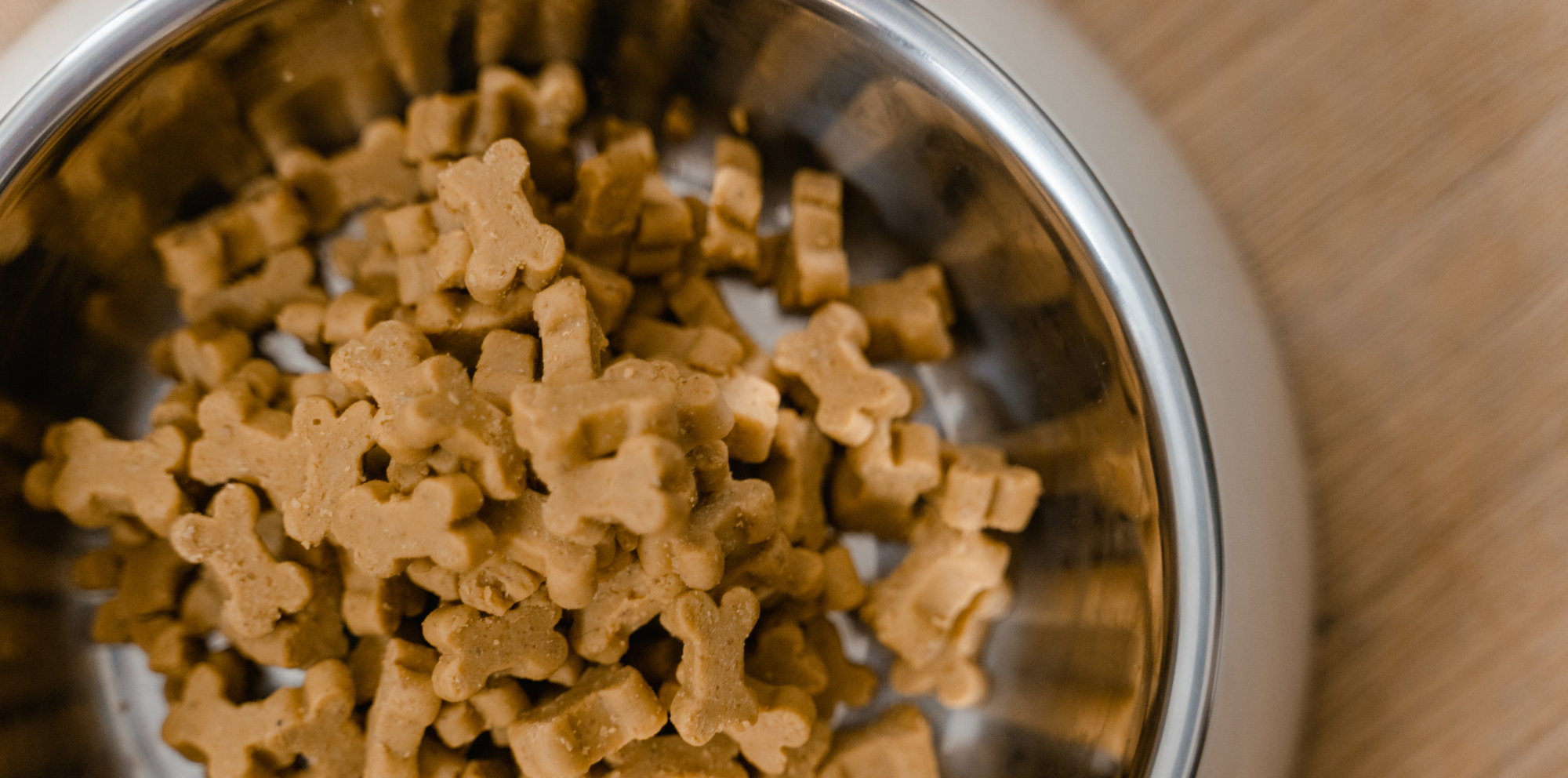

How to read the composition of dog food?
Choosing dog food is very important for their health and quality of life. We have summarized the main aspects to pay attention to when reading the food composition to choose high-quality food for your dog:
1. First ingredient – good quality meat or fish
In pet food, ingredients are listed in order of their weight in the total composition. The main ingredient is listed first – the one that the food contains the most. It should be a high-quality animal protein, such as “chicken”, “lamb”, “salmon”, “beef”. Avoid foods that list “animal (by-)products” or “meat meal” as the first ingredient without a clear indication of what the ingredient is.
It comes from an animal.
Good quality food usually has the percentage of ingredients clearly stated, especially the main ingredient. If you don’t see a clear indication, it’s a sign that the manufacturer may be hiding this information. This could indicate a lower quality food.
2. Carbohydrates and grains
Many dogs tolerate rice, oats, and sweet potatoes well, but it is advisable to avoid foods that contain ingredients called “ fillers ” – such as corn, soy, wheat flour. “Fillers” are usually added to increase the volume of food cheaply, but they are not rich in nutrients and can also cause allergies.
3. Added additives
Pay attention to added additives. Avoid foods that contain artificial colors, flavors, artificial preservatives, and sugar. By the way, sugar in dog food is often not simply labeled as "sugar" - it can be hidden behind different names, such as glucose, dextrose, sucrose. If you see more than one of these ingredients, especially at the top of the ingredients list, it's better to choose another food.
The added supplements can also be healthy – for example, fish oil, glucosamine, green-lipped mussels, etc. Don't be afraid if you see natural preservatives in the ingredients, such as rosemary or tocopherols – they will not harm your pet's health.
4. Calcium-phosphorus ratio
The optimal calcium-phosphorus ratio is 1.2:1 (i.e. slightly more calcium than phosphorus; however, the acceptable range is slightly higher – from 1:1 to 2:1, depending on the dog's age and health). So, if the food contains, for example, 1.2% calcium, then the amount of phosphorus should be around 1.0%. The correct calcium-phosphorus ratio in dog food is essential for bone development, muscle function and metabolism. The food should not contain more phosphorus than calcium – this can interfere with calcium absorption.
5. Clearly stated nutritional value
High-quality food will always have its nutritional value clearly indicated - protein, fat, fiber, moisture, ash (mineral) content in percentage. Take into account that depending on age and health status, the most appropriate distribution of nutrients for dogs will be individual - if in doubt, consult a veterinarian. The amount of carbohydrates in food is often not indicated, as it is not a mandatory requirement. However, you can calculate the approximate amount of carbohydrates yourself using the formula: carbohydrates = 100-(protein + fat + fiber + ash + moisture) .
The optimal amount of carbohydrates in a dog's diet can vary depending on the dog's age, activity level, and health. In general, carbohydrates should not make up more than 35-45% of the diet.


